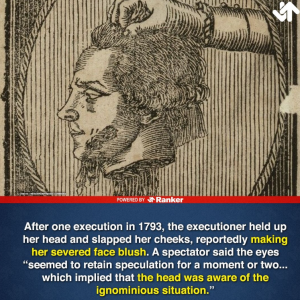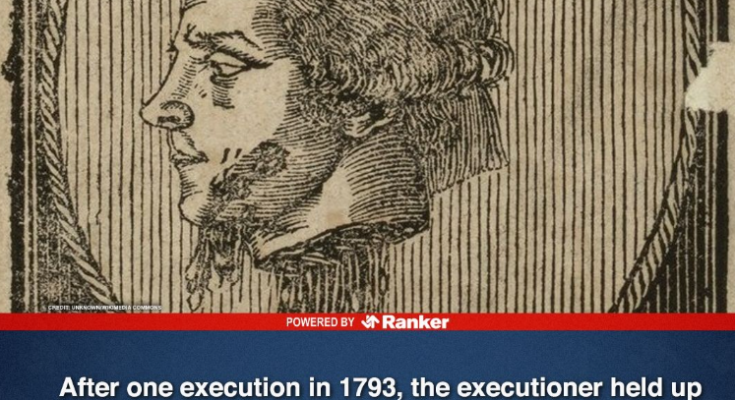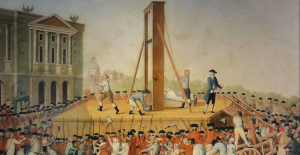
What It Was Like To Watch A Beheading By Guillotine
The guillotine is perhaps one of history’s most infamous instruments of execution. Its sharp blade, swift action, and stark finality have long captured the public imagination. But beyond the cold mechanics and the headlines lies a much more vivid, disturbing experience — that of being a witness to a beheading by guillotine. What was it really like to stand among the crowd, waiting for the condemned’s final moments, and to see justice carried out in such a brutal, yet oddly clinical manner?
The Setting: A Public Spectacle
During the height of the French Revolution and well into the 19th century, executions by guillotine were public events, often held in town squares or other communal spaces. Tens, sometimes hundreds or thousands of people would gather — curiosity, fear, political fervor, and morbid fascination mingling in the air.
The guillotine itself was a stark structure: a tall wooden frame with a heavy, angled blade suspended at the top, gleaming cold steel ready to drop at a moment’s notice. The device’s very presence was unnerving — a grim reminder of the power of the state and the thin line between life and death.
Crowds were a mixture of social classes: from aristocrats watching with a detached air, to the working poor seeking a grim kind of entertainment or justice served. Vendors sold snacks and drinks nearby, adding an almost surreal normalcy to the proceedings. Children might be dragged along, either to witness a lesson in justice or simply out of curiosity.
The Atmosphere: Charged and Tense
As the condemned was brought forward — often blindfolded, sometimes defiantly proud, occasionally trembling with fear — a hush would fall over the crowd. The atmosphere was heavy with anticipation and a strange sense of communal participation. This was more than just an execution; it was a ritual, a collective moment where society’s moral codes were being enacted in a physical, irreversible way.
Spectators reported that the air was thick, not only with the smell of dust and sweat but also with an intangible tension. Some felt a cold shiver run down their spine, while others looked away, unwilling or unable to confront the reality of the act about to unfold.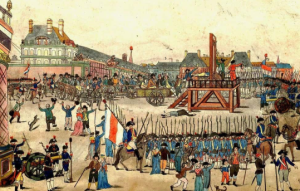
The Final Moments: Silence Before the Fall
The condemned was positioned at the base of the guillotine — head placed on the wooden rest, arms often restrained. The executioner, sometimes accompanied by assistants, would check the blade, ensuring it was sharp and ready. The crowd might hear a final prayer, a last statement from the prisoner, or sometimes nothing at all.
Then came the signal.
In some accounts, it was a simple command; in others, a drumbeat or a nod. The blade would drop with terrifying speed, severing the head from the body almost instantly.
Witnesses describe this moment as simultaneously horrifying and strangely clinical. The guillotine was designed for efficiency — to minimize suffering and avoid the botched executions common with earlier methods. The swift drop meant the victim often lost consciousness before feeling pain.
The Immediate Aftermath: Shock and Silence
When the blade fell, the crowd’s reaction was varied. Some gasped in shock, others remained silent, grappling with the stark finality of what they had just seen. A few spectators might cheer or shout — especially in politically charged times, when the execution symbolized the downfall of a hated figure.
Witnesses recall the unsettling sight of the severed head placed in a basket, sometimes shown to the crowd, sometimes taken away quickly. The body would be removed, often with a chilling efficiency, and the crowd would begin to disperse, many still processing the event.
For some, the experience was traumatizing. They described nausea, trembling, or a deep, emotional heaviness. Others became desensitized, attending multiple executions and regarding the process with a cold, almost mechanical detachment.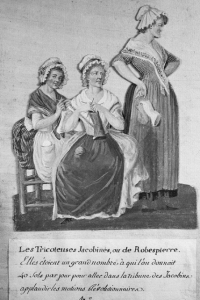
Psychological Impact: The Weight of Witnessing Death
To watch a beheading by guillotine was not just to see a death — it was to confront mortality in a brutally direct way. Many who attended regularly reported mixed feelings: a grim fascination combined with horror and empathy for the condemned.
For some, the experience reinforced belief in justice and the power of law; for others, it raised uncomfortable questions about cruelty, humanity, and the nature of punishment.
Victims of political executions often evoked particular emotions — sympathy from their supporters, joy from their enemies. The guillotine became a symbol of revolutionary justice but also a tool of terror.
A Personal Account: The Witness Speaks
One eyewitness from the French Revolution, Jacques, described his experience:
“The day was gray and cold. The square was filled with people, faces pale, eyes wide. When the condemned man was brought forth, there was a brief silence — a silence heavier than any noise. The blade dropped like thunder, and for a moment, the world seemed to hold its breath. I felt my heart pound in my ears, and yet I could not look away. It was as if I was witnessing not just a man’s death, but the death of something inside myself — a piece of innocence lost.”
Such testimonies highlight the profound emotional complexity of the experience.
The Role of the Executioner
The executioner, often a figure both feared and pitied, had to perform the act with precision and composure. While the guillotine made the physical act easier, the psychological burden remained.
Some executioners were known to show compassion, allowing the condemned a final moment of peace. Others were rumored to take pleasure in their role, adding another layer of dread to the event.
Changing Perspectives Over Time
As society evolved, public executions became less common, moving behind closed doors due to shifting attitudes about human dignity and the spectacle of death. The guillotine itself became a symbol of a darker, more violent era.
Today, descriptions of guillotine executions serve as chilling historical lessons — reminders of humanity’s capacity for both justice and cruelty.
Conclusion
Watching a beheading by guillotine was an intense, unforgettable experience — a moment where life was extinguished in mere seconds before the eyes of a crowd bound together by curiosity, fear, or ideology. The mix of clinical efficiency and raw human emotion created a scene both horrifying and profoundly human.
For those who lived through it, the memory of that moment lingered — a stark reminder of mortality, justice, and the fragile line between civilization and barbarity.